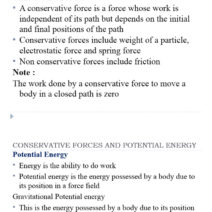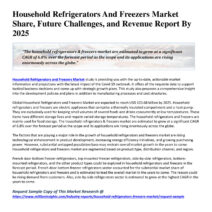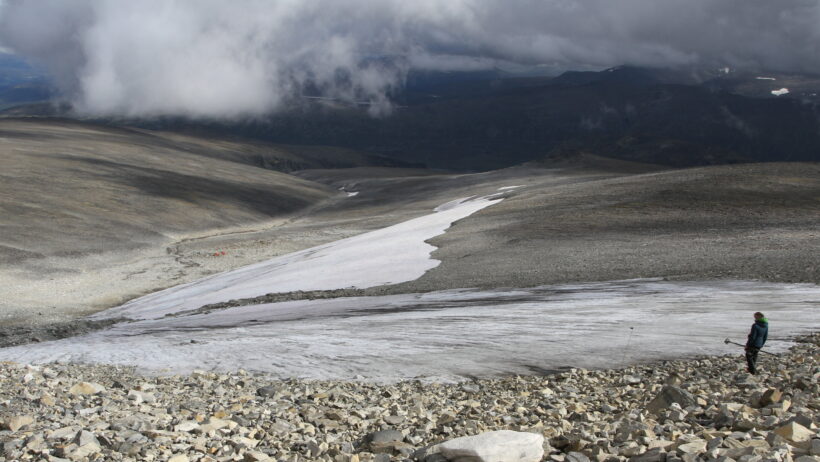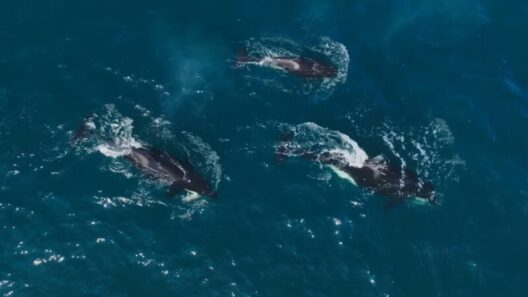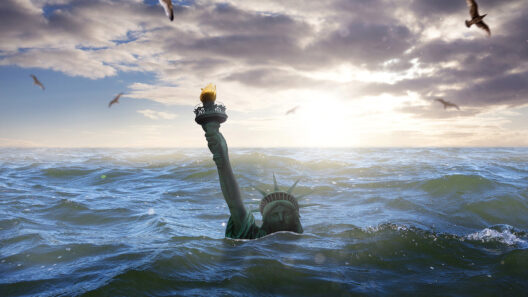Global warming has become a prominent issue in contemporary discourse, raising questions about its various implications on Earth’s climate system. The idea that global warming could potentially trigger an ice age may seem paradoxical at first glance. However, the intricacies of Earth’s climatic mechanisms reveal a complex interplay between warming temperatures and the phenomenon of glaciation. Understanding this relationship is crucial for grasping the broader implications of climate change.
To navigate this conundrum, it is essential to dissect the mechanisms of both global warming and ice age phenomena. Global warming refers to the long-term rise in Earth’s average surface temperature, primarily attributable to increased concentrations of greenhouse gases in the atmosphere. Carbon dioxide, methane, and nitrous oxide emit from various human activities, including fossil fuel combustion, deforestation, and industrial processes. This accumulation of greenhouse gases creates a blanket effect, trapping heat within the atmosphere and causing temperatures to rise.
On the contrary, ice ages are characterized by prolonged periods of significant cooling, where vast areas of the Earth become enveloped in ice sheets. Historically, ice ages have alternated with interglacial periods of warmth. The most recent ice age, known as the Quaternary glaciation, began approximately 2.58 million years ago and continues today, although we currently exist within an interglacial phase. Understanding these time scales is vital for comprehending how global warming might alter climatic patterns.
One of the pivotal mechanisms through which global warming could, paradoxically, instigate an ice age involves the disruption of ocean currents. The thermohaline circulation, often dubbed the “global conveyor belt,” is driven by differences in temperature and salinity in ocean waters. This current system plays a crucial role in distributing heat around the planet. A significant influx of freshwater from melting ice sheets or glaciers can dilute the salinity of seawater, potentially disrupting these currents and impairing their efficiency in heat distribution.
Moreover, certain climate models suggest that as polarization occurs due to rapid warming in specific regions, areas like the North Atlantic could experience a cooling effect. The melting of the Greenland ice sheet, for example, releases a massive volume of freshwater into the Atlantic Ocean. This influx not only disrupts local ecosystems but could also lead to a slowdown of the thermohaline circulation, subsequently resulting in a temporary cooling effect in Europe and North America.
To further understand this phenomenon, it is critical to explore the feedback mechanisms involved in climate systems. Feedback loops—both positive and negative—play a fundamental role in determining climate stability. For instance, the albedo effect describes how reflective surfaces, such as ice and snow, help to cool the planet. As ice melts due to warming, less sunlight is reflected back into space, leading to further warming and accelerated ice melt. This creates a positive feedback loop, intensifying the effects of climate change.
Conversely, in specific scenarios where abrupt changes occur, cooling feedbacks may potentially initiate conditions conducive to an ice age. The physical and chemical interactions between the atmosphere and ocean are immensely intricate; thus, their response to rapid climatic shifts is not entirely predictable. Events such as volcanic eruptions, which can inject substantial aerosol particles into the atmosphere, may lead to short-term cooling effects, resembling conditions that could precede an ice age.
The interplay between abrupt climate change and the Earth’s geological history provides valuable insights into these potential shifts. Past climates have exhibited instances of rapid transitions. For instance, the Younger Dryas, a climatic event around 12,900 to 11,700 years ago, saw a sudden drop in temperatures despite a general warming trend. Such historical precedents illustrate the earth’s climatic sensitivity to both natural and anthropogenic influences.
While theoretical frameworks exist suggesting that global warming could instigate an ice age, it is imperative to consider the timeframe. The onset of an ice age does not occur overnight; rather, it spans thousands of years, involving a labyrinthine confluence of factors. Thus, while immediate effects of climate change manifest through extreme weather events and rising sea levels, the potential for long-term cooling is nuanced and arises from complex interactions over extended periods.
Moreover, the socio-economic ramifications of transitioning between warming and cooling phases cannot be overlooked. Societies that are ill-equipped to adapt to climate variability face significant risks. Climate change exacerbates existing inequalities, particularly in vulnerable communities that lack resources to effectively respond to both warming and potential cooling conditions. Therefore, addressing the challenges of climate change necessitates a comprehensive approach that encompasses preparation for both extremes.
In summation, the notion that global warming could lead to an ice age encapsulates the intricate dynamics of Earth’s climate system, revealing a paradox that defies simple categorization. The disruption of ocean currents, feedback mechanisms, historical precedents, and socio-economic considerations all contribute to a complex tapestry of climatic change. As we continue to grapple with the realities of global warming, fostering an understanding of these paradoxical relationships will be essential in forming effective strategies to mitigate its impacts and prepare for the possible extremes of climate. By comprehensively addressing these challenges, humanity can cultivate resilience against the uncertainties of our ever-evolving planet.
